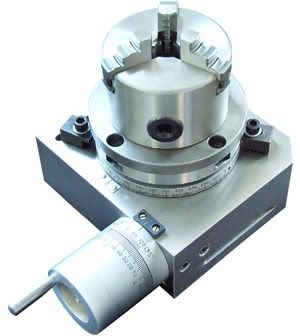As I finished typing this I thought that instead of indexing only on the previous holes perhaps we could index on the center of the disk (even if the center hole can not be done in the mill). That way the radial distances would be safe from drift and the errors would only accumulate "in the angles" as we "release", "rotate 360/16" and "clamp".
Hmmm...
Does not fit in the planned enclosureI guess I'll need to take the front of it off or something.




 : I would appreciate any tips
: I would appreciate any tips  . I would like to make the attached pic piece in a Sieg X3 CNC mill (which I'm still in the process of quoting). The right tool to do this would probably be a waterjet... still... If we were to take this as dare how would we go about doing it?
. I would like to make the attached pic piece in a Sieg X3 CNC mill (which I'm still in the process of quoting). The right tool to do this would probably be a waterjet... still... If we were to take this as dare how would we go about doing it? . The next idea was to use the fact that most of the holes are a few inches from the edge. So, perhaps, one could figure out a clamping and indexing that simply allowed you to do the next section by indexing on the holes you just made for the current section... we would also cut/finish the circle edge at the same time -- or in a second pass.
. The next idea was to use the fact that most of the holes are a few inches from the edge. So, perhaps, one could figure out a clamping and indexing that simply allowed you to do the next section by indexing on the holes you just made for the current section... we would also cut/finish the circle edge at the same time -- or in a second pass.

 Reply with Quote
Reply with Quote






